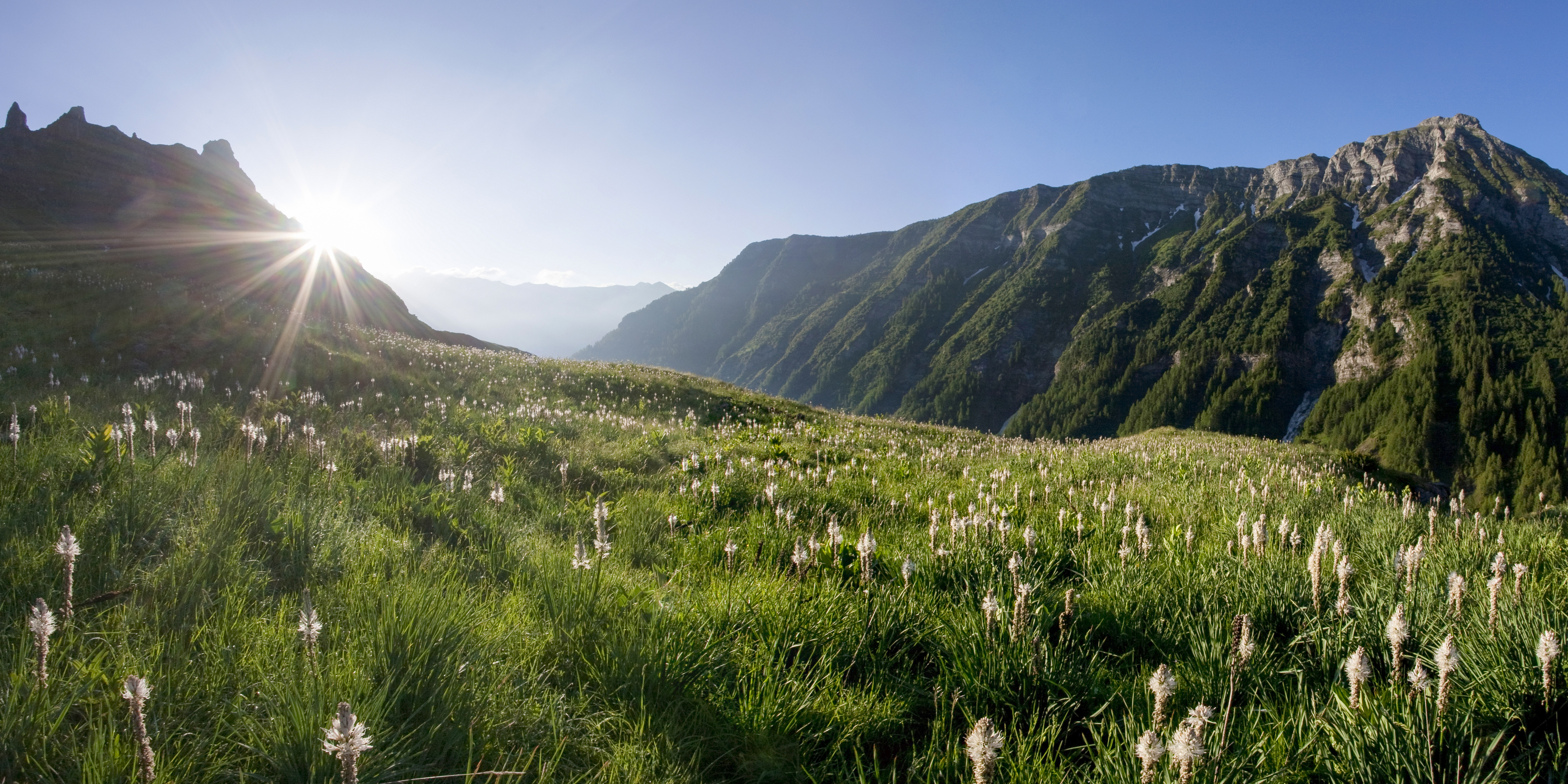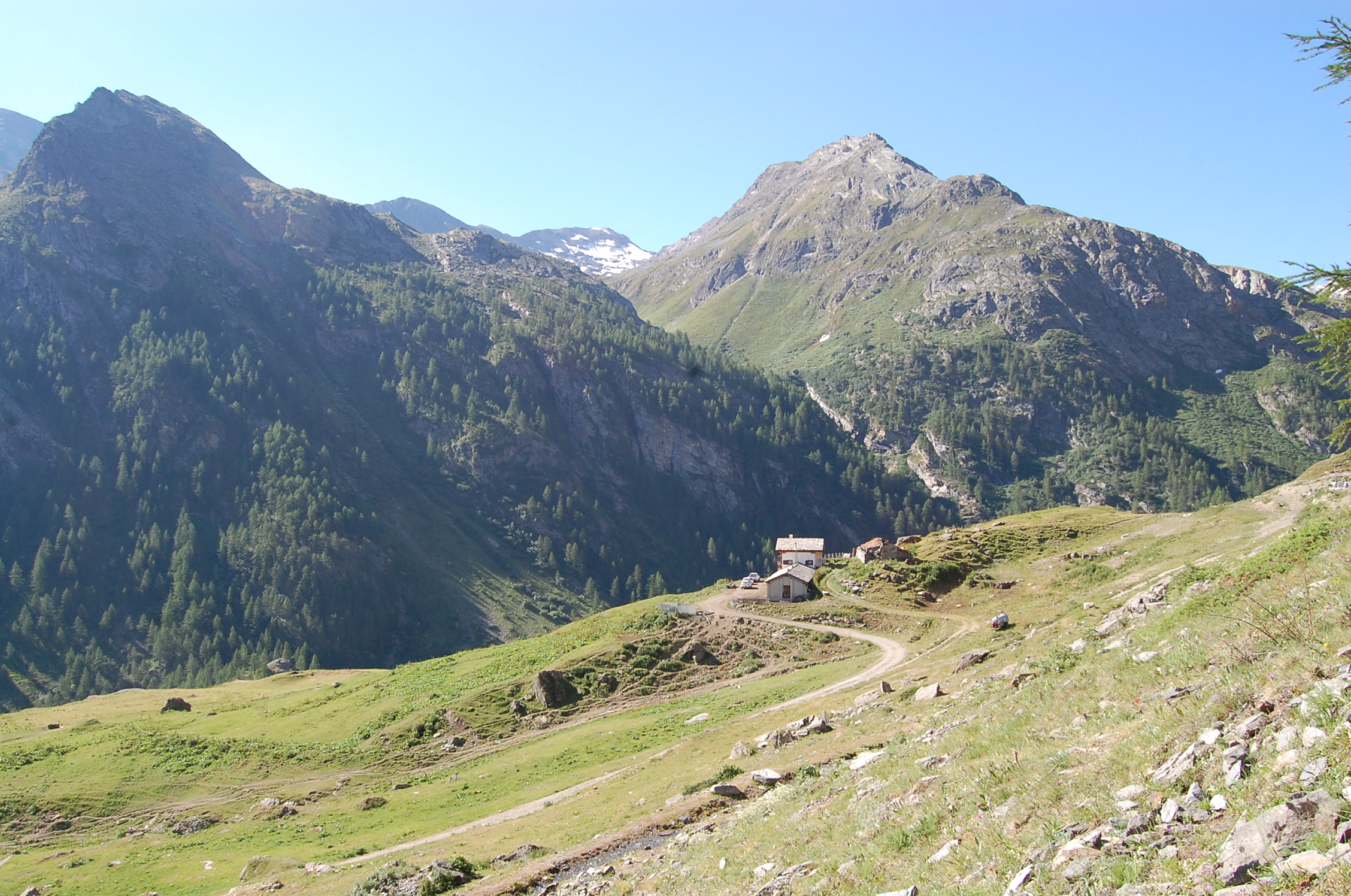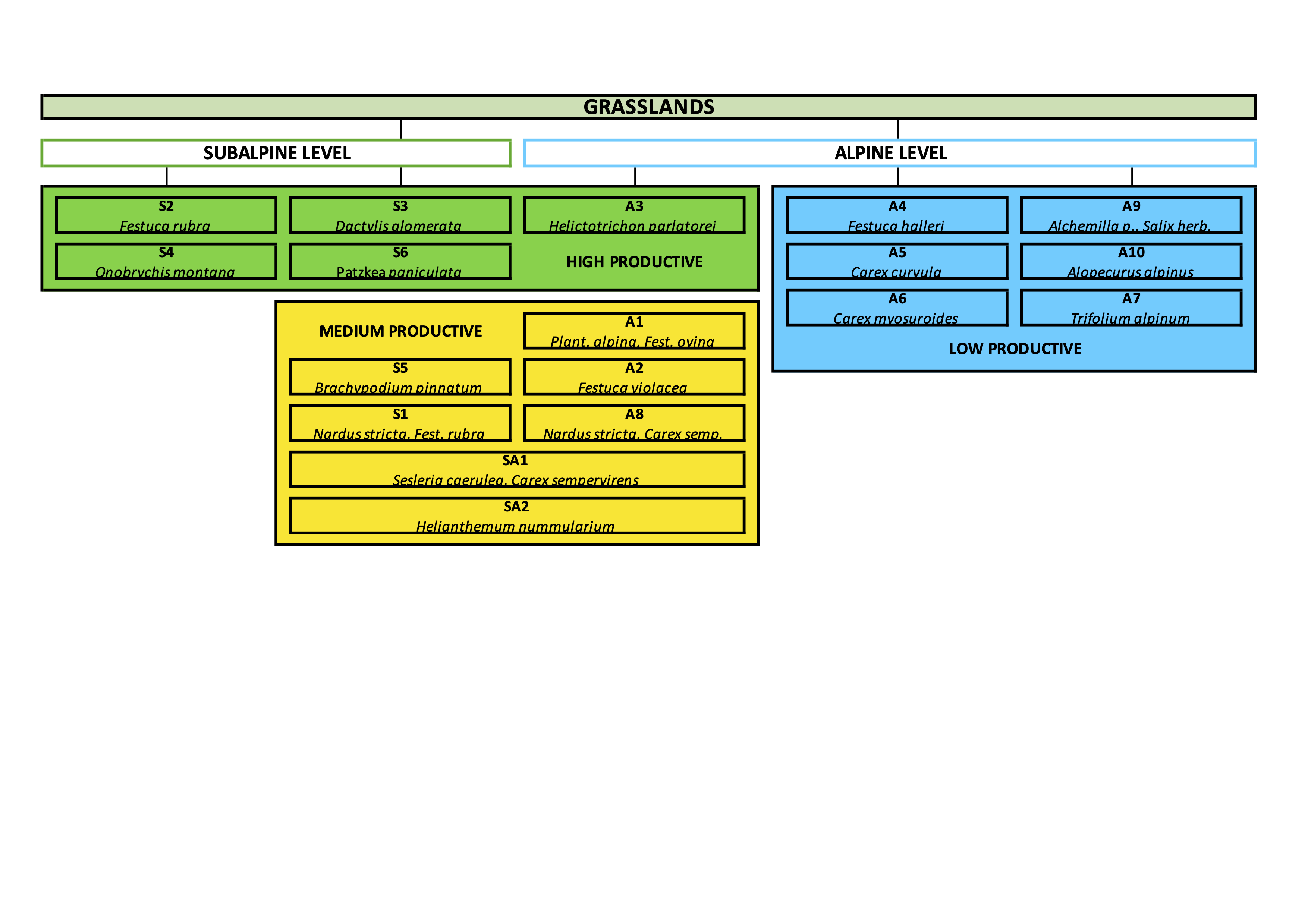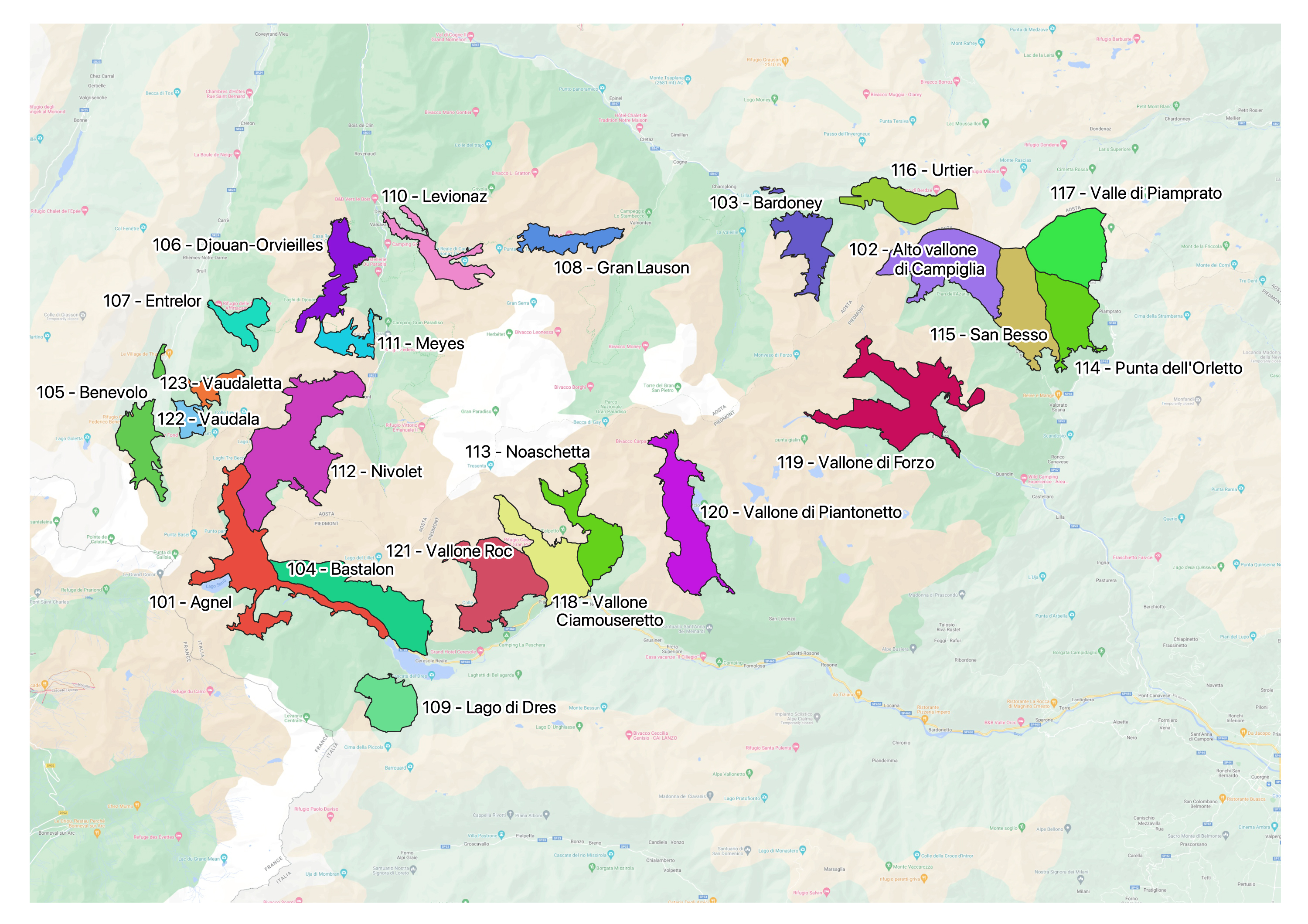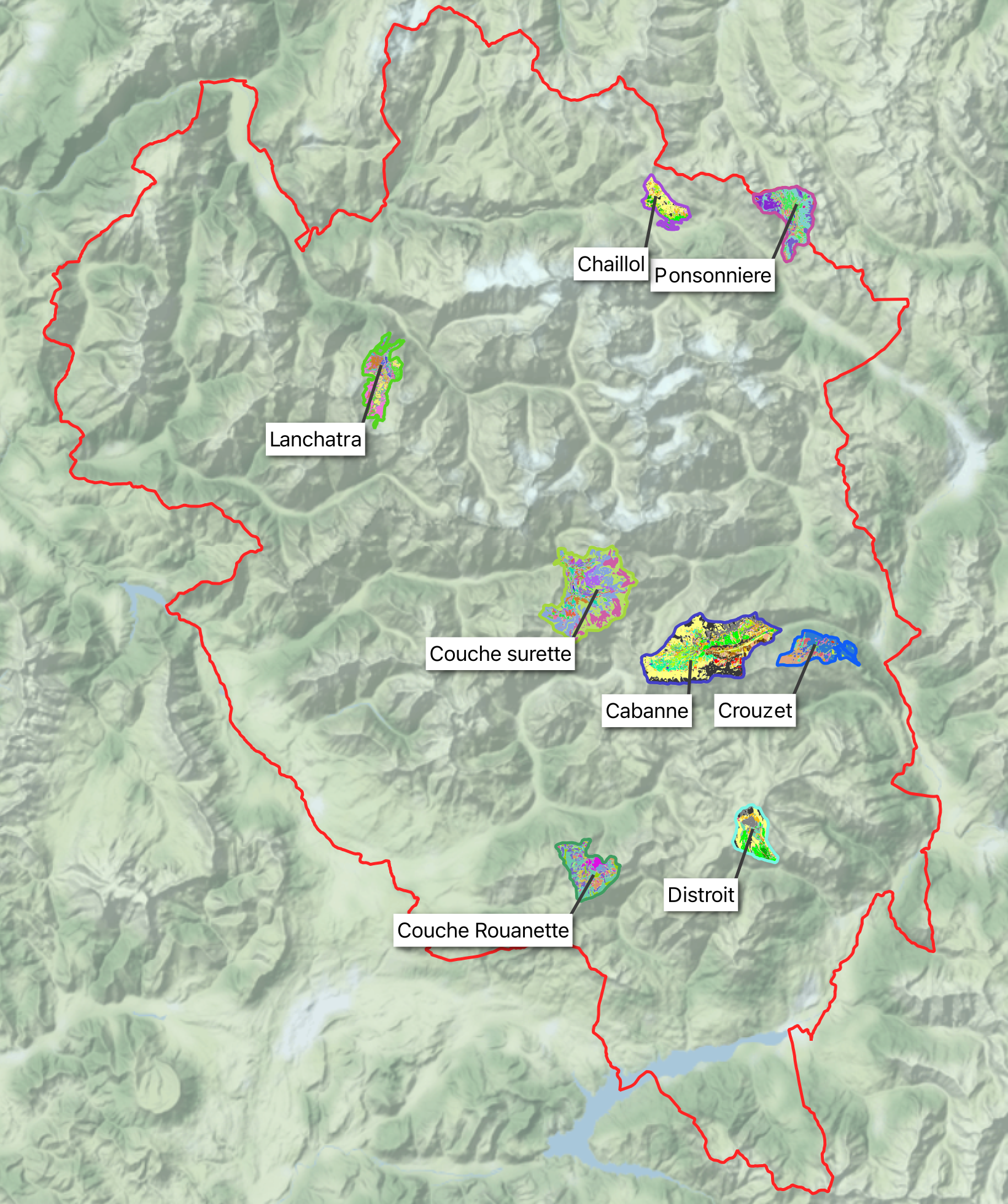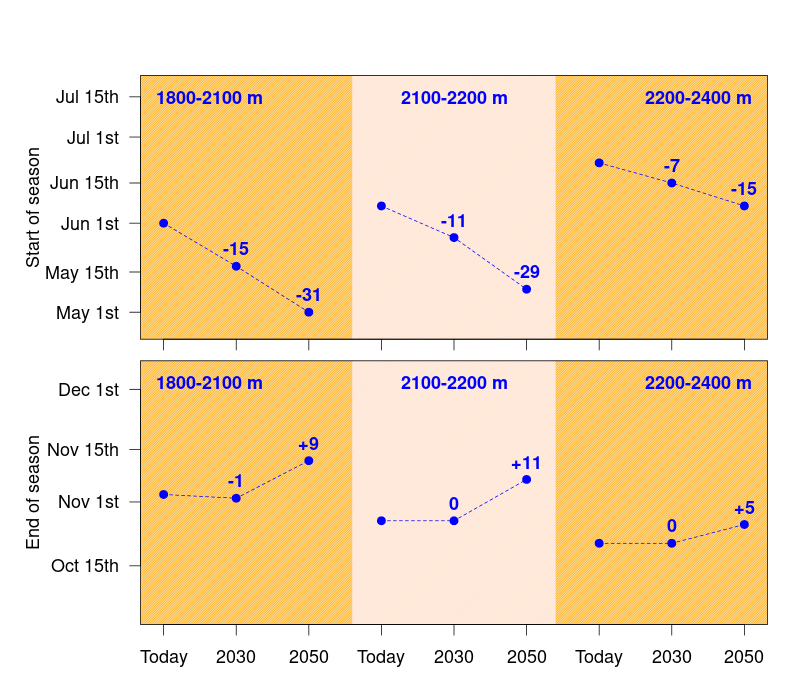|
• Lack of snow, very dry winter (frost exposure)
or
• Early snowmelt followed by spring frost
or
• Late spring or cold spring
|
Low production of grass due to lack of water or low
temperatures or growth stop caused by frost
|
Poorer pastoral resource in quantity on low pastures
(usually more productive) or delayed start of the growing
season
|
Increase the consumable coarse vegetation or
shrubs grazing and supplementary feeding of lactating cows
|
MANAGEMENT: Beware of a too early climbing towards the
highest grasslands because of a lack of resources on low
pastures. The use of coarse vegetation is recommended to
save grass and for the health of the animals.
BIODIVERSITY: Direct impact on minor species (if
applied in spring).
|
Guided grazing or setting up of fenced corrals.
If the herd is not used to consuming this type of
vegetation, the shepherd's job will be complicated
|
• Shepherd skills (training)
• Technical support to farmers
• Habits of the herd
|
|
Reduction of the stocking rate by limiting the number of
animals
|
MANAGEMENT: Not always possible
|
Observe the grasslands before the amontagnage
|
• Proximity of the farm to the alpage
• Possibility of finding other destinations for a part of
the herd
• Listening to the farmer
• Alternative solutions within the farm
|
|
Reduction of the animal stocking rate by delaying the amontagnage
|
MANAGEMENT: Not always possible (e.g. for
agro-environmental related obligations, opening of
accommodation activities)
Also depends on the distance of the summer mountain pasture
from the valley floor
|
Observe the grasslands before the amontagnage
|
• Proximity of the farm to the alpage
• Flexibility and stocks on the farm
|
|
Search for additional pastures and/or brush clearing on the
lower parts of the alpage
|
MANAGEMENT:
- Availability and location of summer mountain pasture
facilities and equipments
- Good knowledge of the alpage
|
• Difficulties to graze in wooded areas when predators are
present
• Difficult to find water
|
• Presence of a shepherd's helper
• Works and equipment financing
|
|
Recovery or construction of buildings and infrastructure
for underutilized grazing areas
|
MANAGEMENT: Have the right to use agricultural land
|
Accessibility to pastures
|
• Works financing
• Owners' will
• Consent of stakeholders
|
|
Search for temporary buffer zones outside the alpage
|
MANAGEMENT: Distance from the alpage or the farm
BIODIVERSITY:
• Direct impact on minor species
• Ungulates: competition
|
• Find free grasslands
• Access to pastures
• Fragmentation of properties
• Pasture grazing in the forest is not always allowed
|
• Support for pasture search by municipalities and other
bodies
• Creation of AFP (pasture landowners association)
• Relaunch of grazing in the intermediate areas of mayen
|
|
Early démontagnage at the end of the alpage season
|
MANAGEMENT: Availability of pastures at the valley floor
|
Choosing the right démontagnage date
|
• Farmer consultation
• Alternative solutions on the farm
|
|
Reduction in quantity and quality of grass
|
Modification of yeaning dates
|
MANAGEMENT: Not always possible
|
Adapt to the changing yeaning period and the market
|
Technical support to farmers in this process
|
Degradation of vegetation composition
|
Change of livestock category, breed or species
|
MANAGEMENT: Radical change in the productive orientation
|
Complicated to implement
|
• Market
• Shepherd skills (training)
|
|
Low grass production at the beginning of the season and/or
grass too tender
|
Poorer pastoral resource in quantity on low pastures
(productive areas) or delayed start of vegetation
|
Permanent modification of grazing calendar ( amontagnage)
|
|
Realignment of the annual operating calendar of the farms
|
Flexibility of the farm
|
|
Early spring
|
Plant phenological stage already advanced at the arrival on
the alpage
|
Lower nutritional quality and palatability
|
Tight herding in productive grassland and supplementary
feeding for lactating cows
|
MANAGEMENT:
• Difficult to fatten lambs or keep the same milk
production with this type of resource
• Beware of overgrazing
|
In case of high number of lambs, a more suitable vegetation
is needed
|
Shepherd permanent presence and skills (training)
|
|
Advanced grazing period (exceptional for one year or all
years)
|
MANAGEMENT: Distance from the alpage or the farm
BIODIVERSITY:
• Direct impact on minor species
• Ungulates: competition
|
• Observe the grasslands before the amontagnage
• Difficult to combine haymaking and grazing, both advanced
|
• Proximity of the farm to the alpage
• Possibility of finding other destinations for a part of
the herd
|
|
Spring drought and very little snow cover
|
Insufficient water stock in the soil at the start of
vegetation growth
|
Low resource in low-altitude productive pastures
|
Reduce grazing pressure by reducing the period of use of
the lowest grasslands. It can be compensated in increasing
grazing pressure on forested lowland areas
|
BIODIVERSITY: Care must be taken with overgrazing of
fragile grasslands and the phenology of early flowering
plant species of EU interest (e.g. orchids)
|
• Identify when grazing has too much impact on the
environment
• Grazing in the forest is not always allowed
|
Shepherd skills (training)
|
|
Delayed or slower démontagnage
|
MANAGEMENT:
- Not always possible.
- Distance from the alpage or the farm
|
Observe the grasslands before the amontagnage
|
• Proximity of the alpage to the farm
• Flexibility and stocks on the farm
|
|
Reduction of the stocking rate by limiting the number of
animals
|
MANAGEMENT : Not always possible
|
Observe the grasslands before the amontagnage
|
• Proximity of pastures
• Possibility of finding other destinations for a part of
the herd
• Farmer consultation
• Alternative solutions on the farm
|
|
Very marked drought in early summer
|
Grass that dries quickly
|
Nutritional quality and palatability could be reduced
|
Démontagnage of a part of livestock during the season
|
MANAGEMENT: Distance of the alpage from the farm
|
A truck is needed to transfer the animals
|
Flexibility and stocks on the farm
|
|
For recurring events: reduction of the stocking rate by
limiting the number of animals
|
Beware of overgrazing
|
• Agreements between breeders
• Possibility of finding other destinations for a part of
the herd
|
Water availability
|
|
Low grass production
|
Lack of available grass.
Negative consequences on animal health and production
|
Exploration of new pasture areas, including wooded or
shrubby areas
|
MANAGEMENT: Predators: alert for young and little
livestock.
BIODIVERSITY:
• Vegetation: site-specific protection measures
• Minor species: direct impact
• Ungulates: competition
|
Difficult if predators are present
|
Difficulties in obtaining the necessary permission to use
these areas - land management is often complex
|
|
Search for buffer areas on lower pastures or on the farm
|
MANAGEMENT: Distance from the alpage or the farm
BIODIVERSITY:
• Direct impact on minor species
• Ungulates: competition
|
• Finding free pastures
• Availability of land
|
• Support for pasture search by municipalities and other
bodies
• Creation of AFP (pasture landowners association)
|
|
Storage of forage resources in lowland farm by increasing
hay making in marginal areas or by hay purchasing
|
MANAGEMENT: Intensification practices on species-rich
grasslands
|
Find complementary hay meadows
|
Improvement of the land context
|
|
Fodder supply in alpage for lactating cows
|
BIODIVERSITY: Beware of the impact on the environment
|
• Presence of tracks to access alpages or
compensation for helicopter use
• Feeding costs and difficulty in calibrating quantity
|
Availability of hay at the valley floor
|
|
Pastoral utilization of fodder trees, in low-elevation
summer mountain pastures
|
BIODIVERSITY: "Habitat trees": specific protection measures
|
• Herd size
• Distance from broadleaved trees
• Elevation
• Adapted forest thinning techniques
|
|
|
Necessity to restore complementary grazing areas and/or
improve animal welfare
|
Pasture restoration and construction or rehabilitation of alpage facilities in new grazing areas.
Restoration of mid-mountain pastures (mayen)
|
BIODIVERSITY:
• Monitoring sustainability
• Manage direct impacts of operations with mechanical
equipment
• Respect co-benefits: carbon uptake, water holding
capacity
|
• Accessibility
• high worklad
|
• Funding
• Owners' will
• Consent of stakeholders
|
|
Heatwaves and wind at the beginning of summer
|
Grass reaching maturity at the same time (or even dried)
over a large part of the summer mountain pasture
|
Lower nutritional quality and palatability
|
Tight herding in productive grassland and supplementary
feeding for lactating cows
|
MANAGEMENT: Difficult to maintain the same milk production
with this type of resource
BIODIVERSITY: Beware of overgrazing fragile grasslands
|
Good skills in guided grazing are required
|
Shepherd skills (training)
|
|
Démontagnage
of a part of livestock during the season or early démontagnage of all livestock
|
MANAGEMENT: Distance of the alpage from the farm
|
A truck is needed to transfer the animals
|
Flexibility and stocks on the farm
|
|
Very hot and dry summer, heatwave and drought
|
Source dryout
|
Watering problem
|
Adapt grazing tracks for watering the animals
|
BIODIVERSITY:
Watching out for possible deterioration of vegetation and
soil related to additional animal movements
|
Adaptation of grazing usually set on vegetation
|
Early summer, assessment of a possible risk of water
shortage
|
|
Watering and irrigation problem
|
Rational management of water points on pastures
|
MANAGEMENT:
• Water supply possibilities
• Promoting the use of movable watering tanks
BIODIVERSITY: Vegetation and minor species: direct impact
from trampling and pathways
|
Create a water distribution network on the alpage
|
• Important investments
• Shepherd skills (training)
|
|
Search for long-lasting supply solutions (impluviums,
catchments, cisterns, drinkers, etc.)
|
MANAGEMENT:
• Monitoring the quantity, quality and location of
equipment
• Promoting the use of movable watering tanks
BIODIVERSITY: Vegetation and minor species: direct impact
|
Find the right compromise to avoid the multiplication of
equipment
|
• Financing of works and equipment
• Accessibility
|
|
Restore traditional irrigation systems and improve
irrigation efficiency by sprinkling
|
MANAGEMENT:
• Costs (installation)
• Promoting the use of movable watering tanks
BIODIVERSITY:
• Vegetation and minor species: Direct impacts from
trampling and pathways
• Managing the direct impacts of interventions with
mechanical means
|
Complex and time-consuming work
|
• Access of pastures to construction vehicles (mini
excavators)
• Funding of works
|
|
Abandonment of a grazing area or early démontagnage
|
MANAGEMENT: Distance of the alpage from the farm
|
A truck is needed to transfer the animals
|
Flexibility and stocks on the farm
|
|
Grass that dries quickly
|
Low nutritional quality and palatability
|
Increase the consumable coarse vegetation or
shrubs grazing and supplementary feeding of lactating cows
|
MANAGEMENT:
- Beware of too early climbing to higher pastures
- Difficult to maintain the same milk production with this
type of resource
BIODIVERSITY: Direct impact on minor species (if applied in
spring)
|
Animal monitoring that will try to seek out the greenest
grass at higher elevations
|
• Shepherd skills (training)
• Water availability
|
|
Possible deterioration of vegetation composition in the
medium and long term
|
Worsening of the fodder resource
|
• Improvement of grazing efficiency (rotational grazing)
• Improvement of pasture quality through optimal manure
management and/or elimination of undesirable species and/or 24 hours grazing time
|
MANAGEMENT: In case of the presence of predators, 24 hours grazing time is not feasible
|
• Control of the herd by the shepherd
• Labor intensive
|
Shepherd skills (training)
|
|
No regrowth on lower grasslands already grazed at the
beginning of the season
|
Grass shortage at the end of the season. Negative
consequences on animal health and production
|
Delaying the grazing of grasslands that dry out less
quickly and lower areas, to preserve grass for the end of
the season
|
BIODIVERSITY: Vegetation: Beware of overgrazing of fragile
grasslands
|
|
Risk of not using some pastures at the end of the season
|
Increased the coarse vegetation grazing at the end
of the grazing season
|
MANAGEMENT: Difficult to maintain the same milk production
with this type of resource
|
Mastery of tight guarding or fence-setting
|
Shepherd skills (training)
|
|
Early démontagnage
|
BIODIVERSITY: Positive effect
|
Winter hay stocks utilisation
|
Flexibility and stocks on the farm
|
|
Very warm days
|
Increased resting time and consequently reduced grass
consumption; high water requirements
|
Changing grazing times (earlier, later, night grazing)
|
MANAGEMENT: In case of predators presence only sunrise and
sunset grazing are manageable (with supplementary helpers
like herders and livestock guardian-dogs)
|
• Night grazing is impossible if predators are present
• Shepherd waking up very early
• Flexibility depends on production orientation and
husbandry system
|
Presence of a shepherd’s helper
|
|
Negative effects of heat stress on animals
|
Consequences for animal health, production and reproduction
|
Inclusion of trees and appropriate management of forest
providing shaded areas in mid- and low-elevation pastures
|
MANAGEMENT: Predators: alert for young and little livestock
|
Adapted forest thinning techniques
|
Integrated silvo-forestry management
|
|
Rainy summer
|
Wet soils
|
Development of paw diseases
|
• Preliminary training of grazing animals, which should be
carried out systematically every year (hooves cutting,
footbaths). Care and isolation of sick animals
• Prioritise areas where vegetation is sparse (or less
tall)
|
BIODIVERSITY: Possible transfer to wildlife MANAGEMENT:
High risk of predation in bad weather
|
Intensive work
|
• Shepherd and farmer skills (training)
• Availability of personnel
• Necessary equipment set up
|
|
Heavy rainfall
|
If vegetation is sparse, increased run-off and soil loss
|
Damage to pastures
|
Continuous and careful maintenance of the drainage channels
and the road network (paths, tracks,...)
|
BIODIVERSITY: Managing the direct impacts of interventions
with mechanical means
|
Intensive work
|
Manpower availability
|
|
Very mild autumn
|
Good pasture conditions at the end of the grazing season
|
Possible extension of the grazing period if grass is still
present
|
Late démontagnage
|
BIODIVERSITY:
• Vegetation: Beware of overgrazing of fragile grasslands
• Ungulates: Competition
|
|
Flexibility of farm organisation
|
